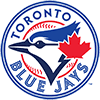Welcome to Part 5 in our six-part trek through the most intriguing pitchers in the majors, with each episode highlighting a different trait of pitching mechanics. For those who would like to catch up, here's a quick click to each of the first four parts of Pitching 3D:
Part 1: NL West, Balance
Part 2: AL West, Posture
Part 3: NL Central, Momentum
Part 4: AL Central, Torque
With all four of the baseline grades in the books, we head east to examine our final two divisions and the two most powerful elements of the mechanics report card. We'll stick with the American League this week to put the mechanical subject of repetition under the microscope, while the extreme levels of intrigue over in the NL East will provide the perfect guinea pig for us to study the overall grade next week.
Repetition
Among all of the subjects on the mechanics report card, repetition is the kingpin. A pitcher can have excellent baselines yet struggle to repeat the timing and positioning of his delivery, resulting in a bunch of missed targets that unravel his best-laid plans. On the flip side, a pitcher can have modest stuff and a low-power delivery yet performance that plays above his tools because he exhibits elite control of his mechanics, allowing him to place the baseball at will. The connection between repetition and command is ingrained, and is among the most consistent links between mechanics and performance along with the bond between velocity and torque
Welcome to Part 5 in our six-part trek through the most intriguing pitchers in the majors, with each episode highlighting a different trait of pitching mechanics. For those who would like to catch up, here's a quick click to each of the first four parts of Pitching 3D:
Part 1: NL West, Balance
Part 2: AL West, Posture
Part 3: NL Central, Momentum
Part 4: AL Central, Torque
With all four of the baseline grades in the books, we head east to examine our final two divisions and the two most powerful elements of the mechanics report card. We'll stick with the American League this week to put the mechanical subject of repetition under the microscope, while the extreme levels of intrigue over in the NL East will provide the perfect guinea pig for us to study the overall grade next week.
Repetition
Among all of the subjects on the mechanics report card, repetition is the kingpin. A pitcher can have excellent baselines yet struggle to repeat the timing and positioning of his delivery, resulting in a bunch of missed targets that unravel his best-laid plans. On the flip side, a pitcher can have modest stuff and a low-power delivery yet performance that plays above his tools because he exhibits elite control of his mechanics, allowing him to place the baseball at will. The connection between repetition and command is ingrained, and is among the most consistent links between mechanics and performance along with the bond between velocity and torque (as discussed last week).
I want to take this opportunity to differentiate between command and control, two terms that are often used interchangeably but which carry different connotations to many evaluators. For me, control describes a pitcher's ability to throw strikes (well-represented by his walk rate) while command describes a pitcher's ability to hit specific targets that are set up by his catcher (walk rate is a poor indicator). A pitcher can be aiming at a low target at the bottom of the zone but instead throw a strike that's high-and-tight, scoring well in the control category while simultaneously exhibiting poor command.

I rarely use the term "control" because it can be so misleading, especially in the case of pitchers that lie on extreme ends of the posture spectrum (Part 2), and I prefer to focus on how well a pitcher puts the baseball where intended.
There are two techniques to better understand the link between mechanical repetition and pitch command. To evaluate command, the key is to hone in on the catcher's glove and to see how much the mitt moves from the setup position to where it is when the ball is eventually caught. My baseball world was rocked the first time that I spent an entire game focusing on just the catcher and his target, and it elevated the level of appreciation that I had for the difficulty that most pitchers have in hitting their targets. To examine timing and repetition, we can bust out the stopwatch and measure a pitcher's time-stamps, beginning from the moment that the front foot lifts off the ground and again clicking the watch at either foot strike or release point. Anchoring on the consistency of the pitcher's timing serves as a proxy for his repetition, and it reveals the magnitude of change when pitching from the stretch versus the windup.
There is a direct link between timing and pitch command that can be used to draw the link between the stopwatch and the catcher's glove. If a pitcher is too quick with his lift-and-stride then his arm will struggle to catch up, releasing the baseball before reaching full extension; the resulting pitch will miss high and/or to the arm side of his intended target.

If a pitcher is too slow with his stride or if he triggers trunk rotation prematurely, then he will release the baseball past his optimal release point, resulting in a pitch that misses low and/or to the glove side of his intended target. This phenomenon is remarkably reliable, especially when combined with the stopwatch strategy and watching the catcher's glove, though it takes practice to appreciate all of the pieces of the repetition-command system.
Repetition is impacted by all four of the baseline grades. A pitcher with strong balance will have an easier time repeating the timing and positioning elements of his motion, while stable posture decreases volatility at release point. The timing sequence is initiated and then dictated by a pitcher's momentum during the lift and stride portions of his delivery, while the timing of a pitcher's trigger of trunk rotation ultimately determines the velocity as well as the accuracy of each pitch. Some guys can repeat despite three-to-four different timing patterns (i.e. peak Johnny Cueto) whereas others struggle to repeat even a single time signature. Timing and repetition are the most important aspects of every pitch, yet the toughest to execute, and plenty of pitchers have fallen well short of ceiling because they failed to harness the time-related elements of his motion. Much of my disdain for the slide step stems from the importance of repetition and the difficulty that many pitchers have in finding consistency.
There's another tool that I like to use when evaluating a pitcher's repetition and consistency: the release-point charts on Brooks Baseball. The charts give a two-dimensional view of the release-point locations for any game that a pitcher throws, and they present a strong representation of a pitcher's consistency at release point.

A pitcher with very strong repetition will exhibit a tight cluster of dots indicating a consistent release point, such as the data above for Madison Bumgarner (70-grade repetition). A pitcher with lesser repetition will have a wider cluster of dots, and using the "pitch type" filter one can see if that pitcher has a tendency to alter his arm angle for specific types of pitches, such as a tendency to get on top of the curveball with a higher arm slot. In some cases, it can even be used to reveal a pitcher who moves on the rubber based on whether he is facing a left- or right-handed batter.

The repetition grade can be applied to a game, a season or a career, though I usually use it on a season-by-season basis. It is the most vulnerable of all the subjects on the report card, as even the best pitchers can lose timing for bundles of deliveries over a stretch, and no other aspect of pitching mechanics is more closely tied to a pitcher's performance.
(stats for stuff and release-point graphs provided by Brooks Baseball)
Ubaldo Jimenez
The promise of Jimenez's magnificent 2010 season in the thin air of Colorado has bought him an extended leash (worth $50 million) that was lengthened by a well-timed stretch with the Indians. Year 1 in Baltimore was a disaster but he rebounded with a semi-useful fantasy campaign in 2015. Will Jimenez be worth drafting this year?
Stats: Jimenez had one of the better seasons of his career in 2015. His walk rate of 8.6 percent was a career-best, though it still ranked just 32nd of 36 qualifying starters in the American League. His best start of the year was also his first, blanking no less than the Blue Jays over 7.0 frames with eight Ks and allowing just two baserunners in the outing. He was very effective for the first half of the season, carrying a 2.81 ERA into the All-Star break, but he gave up at least six runs in three of his next four starts en route to a 5.63 ERA in the second half. Take note DFS gamers: the 22 steals against Jimenez last season were tied for the most in the American League, and just three runners were caught attempting to steal against him.
Stuff: At his peak, Jimenez lived in the upper 90s with his fastball, but the pitch-speed fell off a cliff following his breakout campaign of 2010 as he's dropped five ticks off his fastball and now lives in the low-90s. His secondaries of choice are a splitter and a slider, but the slider was ripped last season for a .531 slugging percentage.
Mechanics: Jimenez's delivery is a mess. He has an extremely open stride, swinging his front leg like a saloon door into foot strike, and his resulting position varies greatly from pitch to pitch. His timing is erratic, often triggering trunk rotation too early in the sequence such that the front shoulder "opens up" prematurely from the hitter's point of view. He invokes heavy spine-tilt but the magnitude of the posture-change is different on every pitch. When things are going well, Jimenez does a much better job of delaying his trigger by keeping his upper-half closed until after foot strike. I have given him a 30-grade for repetition in year's past but his delivery was a bit more steady for part of last season, earning him an extra five points. Even at his best, his release point is all over the place.

David Price
It's funny how perception can be colored by small samples when the spotlight burns brightly. Price has been one of the best pitchers in the game since his early days with the Rays, and he's finished first or second in the voting for the AL Cy Young Award three times in the last six years. He hit a rough patch during the postseason and the recency bias has kept his fantasy ranking lower than usual as we head into the 2016 season. Was October a harbinger of things to come or will Price resume his place among the AL's elite this season?
Stats: Price peeled off a 25.3 percent strikeout rate last season, the second-highest mark of his career (the highest was 26.9 percent in 2014), as the veteran southpaw continues to raise the bar no matter the uniform he is wearing. His 5.3 percent walk rate from 2015 was a step in the wrong direction after posting consecutive seasons of rates under 3.9 percent, but it also represented an improvement over the rates of at least 6.9 percent that he put up every year from 2008-12.
Stuff: The long-term loss of velocity is a threat to all pitchers, particularly those who reside on the right-tail of the velo curve, and a pitcher's long-term viability rests in his ability to either stall father time from sapping his radar-gun readings or by making adjustments to his repertoire. Price has done both. His average velocity of 94.8 mph was higher than both of the previous two campaigns, though it was a couple ticks off from his 2010-12 peak. He has also increased the use of his changeup, which was once a five percent pitch but has grown to represent more than one-fifth of his offerings from the past two seasons combined.
Mechanics: Price's repetition is even better than his incredibly low walk rate suggests. He lives on the borders of the strike zone, such that even a slightly missed target is likely to miss the zone and few of the pitches he throws end up in locations that are enticing to hitters. The toughest matchup for Price is a free-swinging club that makes plenty of contact and swings early in the count (enter the Royals), muting his ability to exploit the edges of the strike zone.

Michael Pineda
I think it's fair to say that, at least so far, the Yankees have won the challenge trade that sent Jesus Montero to the Mariners in exchange for Pineda back in January 2012. Despite limited time due to injuries, Pineda has been effective when on the mound (whereas Montero has returned almost no value at the highest level), and Pineda will be needed to log innings this season for a New York rotation that is loaded with question marks.
Stats: He fell two innings short of qualifying, but Pineda's K:BB ratio of 7.4:1 would have led the American League by a healthy margin, with a 3.1 percent walk rate that would have led the AL (by nearly a full percentage point). Even more incredible is that his 1.2 BB/9 in 2015 was higher than it was the previous season (0.8 BB/9, 2.4 percent walk rate). The 4.37 ERA exceeded his FIP by more than a full point due to the outstanding ratios and mismatched run prevention, and Pineda didn't walk more than two batters in any of his 27 starts last year.
Stuff: Shoulder injuries have a knack for sapping velocity, and Pineda followed suit by losing a tick off his fastball after returning from his own shoulder woes. He has opted to sacrifice velocity for movement, such that 54 percent of his offerings from 2015 registered as cutters that collectively averaged 93.3 mph. His strikeout totals are buoyed by Pineda's slider, which accounted for 90 of 156 strikeouts last season (57.7 percent).
Mechanics: On the surface, a pitcher with numbers that strong in the K and walk categories would seem to be the poster boy for great repetition, but Pineda is an example where that assumption falls short. Despite his incredible numbers for strike-zone control, Pineda has a more volatile release point that results in more missed targets than one might expect, and though his repetition is above-average, the in-zone misses help to explain how a pitcher could give up the same number of home runs (21) as walks in a season. Consider the following chart, which graphs his release point in Pineda's best game of the season, a 16-strikeout gem against the Orioles with zero walks over 7.0 innings.

Drew Smyly
The Tampa Bay rotation is full of pitchers who are teeming with upside, and Smyly is perhaps the biggest tease of the bunch. The former Tiger was unstoppable after his midseason trade to the Rays in 2014, fueling the hype machine going into last season, but injuries limited him to just 66.2 innings.
Stats: For his career, Smyly has registered 9.8 K/9 in the minor leagues and 8.8 K/9 in the majors, fueling his fantasy intrigue. He has also posted solid walk numbers on both a season-by-season and a game-by-game basis, with 55 career starts in the majors yet only game with more than three walks allowed. The hype that was fueled by his 47.2 innings of 1.70 baseball with the Rays in '14 was overinflated, given that the run prevention came on the heals of an unbelievably-low (and clearly unsustainable) .186 BABiP.
Stuff: Smyly has modest velocity for a player with such high strikeout totals, with a fastball that averages a shade over 91 mph. He mixes in a pair of breaking balls, the most devastating of which is a high-70s curveball that is a dominant pitch when he's hitting his spots.
Mechanics: Smyly is a spine-tilting, over-the-top pitcher who finishes unbalanced, leaving him standing on one leg at release point like a drunk flamingo. Over-the-top pitchers tend to have a release-point pattern that has a flatter shape to it, as data points are dictated by a volatile degree of spine-tilt. His consistency is worse than his walk rate might lead us to believe, particularly when considering the timing element of release point.

Marcus Stroman
Stroman entered the 2015 season as one of the bright young stars of the game, but an unfortunate incident resulted in a busted ACL and presumably a lost season. Miraculously, he was back on the mound in September and added a much-needed dimension to the Jays in the postseason.
Stats: Stroman only has 46.1 innings from last season (including playoffs) that we can over-analyze, with a combined 2.72 ERA and a modest 28 strikeouts against 10 walks. His numbers were similar to past performance, with a stinginess for the free pass and subpar K numbers that undermine the quality of his pitches.
Stuff: The right-hander throws his fastball within a narrow velocity band, averaging 92.6 mph last season and maxing out at 95.0 mph. He threw a bit harder in 2014 and he may have been shaking off some rust, but his velocity has been pretty well-established under 95 mph. He throws two distinct breaking balls, a slider and curve, each at about a 15-percent frequency, though the curve is the more devastating weapon; batters have hit a combined .209 with a .310 slugging percentage against the hammer in Stroman's career.
Mechanics: Stroman has an efficient delivery with an excellent blend of speed and power. Shorter pitchers often require bigger momentum to achieve the release-point depth of their taller counterparts and Stroman is no exception, earning a 65-grade for his momentum, and he has had no trouble with repeating the high-paced delivery. He already has plus repetition and Stroman has the mechanical upside to earn elite grades in the future.

























